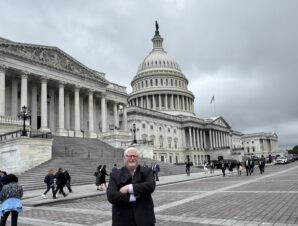Changing Attitudes Create New Opportunities for State’s Plumbing Professionals
A substantial decline in South Florida’s water consumption in recent years may signal a change in consumer attitudes toward the state’s limited natural resources.
“A water conservation ethic is being developed throughout South Florida as more and more people realize the value of water,” said Mark Elsner, administrator of the water supply development section, South Florida Water Management District, in an interview with Florida Plumbing Perspective.
That means the state’s plumbing professionals can take advantage of incentive programs to help retrofit residential, commercial and government facilities, and to educate homeowners about the importance of water conservation, Elsner added.
Statewide, Florida’s five water management districts develop water management plans with particular attention to areas like South Florida, where demand historically exceeds available traditional freshwater supplies. “We then look at developing strategies to meet those demands,” Elsner said.
In April, the district’s Water Resources Advisory Commission presented its 2012 Lower East Coast Water Supply Plan Update, which covered six specific sources of demand:
• Public water supply, 49 percent of the 2010 total demand
• Agriculture, 37 percent
• Recreational/landscape, 9 percent
• Industrial/commercial, 3 percent
• Domestic self supply, 1 percent
• Power generation, 1 percent
Using population statistics and projections from the University of Florida’s Bureau of Economic and Business Research (BEBR), the April report analyzed per capita water use for the 5.6 million residents of Miami-Dade, Broward, Palm Beach and Monroe counties.
That analysis showed daily per capita demand fell from 176 gallons in 2000 to 163 gallons in 2005 and 140 gallons in 2010 for the four-county region. That meant the 53 water utilities serving South Florida had to provide 83 million fewer gallons a day in 2010 compared with 2000, even though the area population increased by 600,000.
“That’s a substantial drop in consumption,” said Elsner. “It’s encouraging that the decline in usage is a long-term trend.”
Looking ahead to 2030, the district’s report projected that the total regional demand would grow from 787.2 million gallons per day in 2010 to 933 gallons per day in 2030. However, that later figure represents a 19 percent improvement over previous forecasts.
Elsner said there are several reasons driving the steady drop in per-capita consumption. A slower economy has made Florida residents more conscious of their utility bills, providing a financial incentive to use less water. The introduction of tiered rates that increase with greater usage has also spurred South Florida residential and commercial users to cut back when possible.
Another contributing factor was the imposition of restrictions on outdoor water use during a period when the region’s rainfall was well below normal levels. County and municipal governments limited lawn irrigation, car washing and other outdoor uses to one or two days per week during periods of drought. In 2010, both Miami-Dade and Broward made twice-weekly lawn watering rules permanent.
Water-conserving technology
But much of the reduction in demand has been due to new water-conserving fixtures and other technology, Elsner said. “Under today’s building codes, new homes use water far more efficiently than in the past,” he said. “Today’s homes are also built on smaller lots, so the outdoor component of water demand isn’t as great.”
Elsner points to aggressive conservation measures taken by the region’s water supply utilities, including offering incentives and rebates for installing new toilets, showers and fixtures in residential and commercial facilities. “Plumbing contractors can explain to homeowners how those incentives provide immediate benefits, along with the long-term savings from installing more efficient systems,” he added
For instance, Miami offers rebates and exchanges for high-efficiency toilets and showerheads and homeowner association irrigation systems. “Miami-Dade County is a poster child when it comes to conservation, investing millions in new technology” Elsner said. “By reducing demand by 30 million gallons a day, the county was able to reduce its capital spending program for alternative water supply sources by hundreds of millions of dollars.”
To the north, Broward County has a water supply partnership with more than a dozen municipalities and utilities that are collectively promoting water conservation, Elsner added.
In addition, the South Florida Water Management District’s cost-sharing Water Savings Incentive Program (WaterSIP) provides assistance to municipalities and large commercial and industrial users seeking to implement innovative technology-based water conservation projects. Award recipients are reimbursed for up to 50 percent of the total project cost or a maximum of $50,000. Types of projects that have received funding in previous years include automatic line flushing devices for hydrants, indoor plumbing retrofits, large area irrigation controls, and soil moisture and rain sensor technology for irrigation system
As Elsner said, “We must all work together to conserve water and develop alternate sources of supply in order to meet the future needs of the South Florida region.”




Join the conversation: